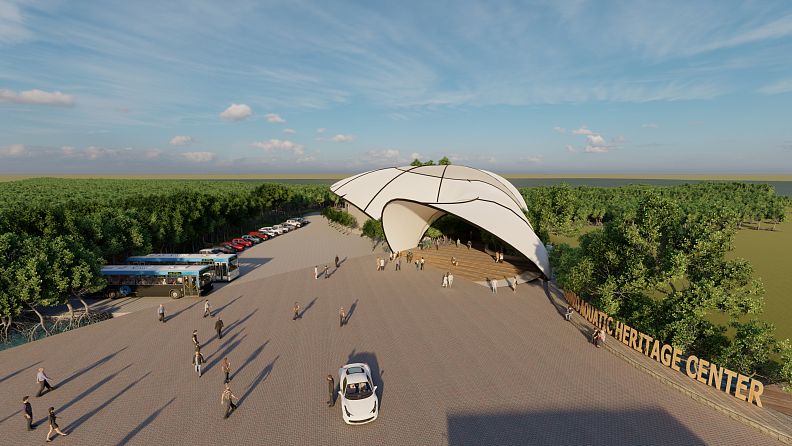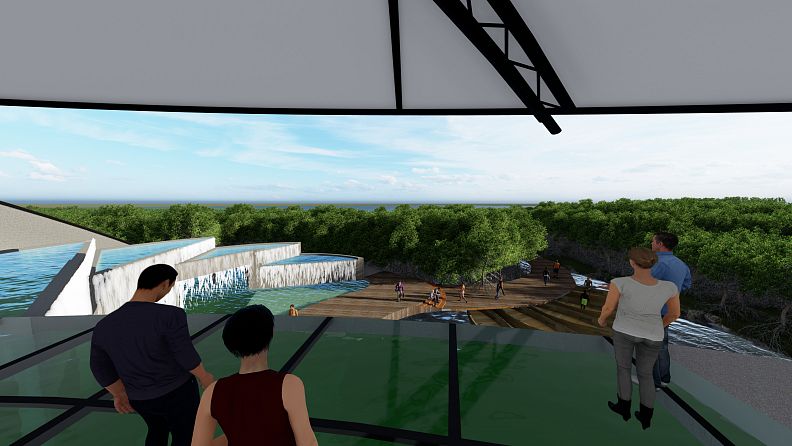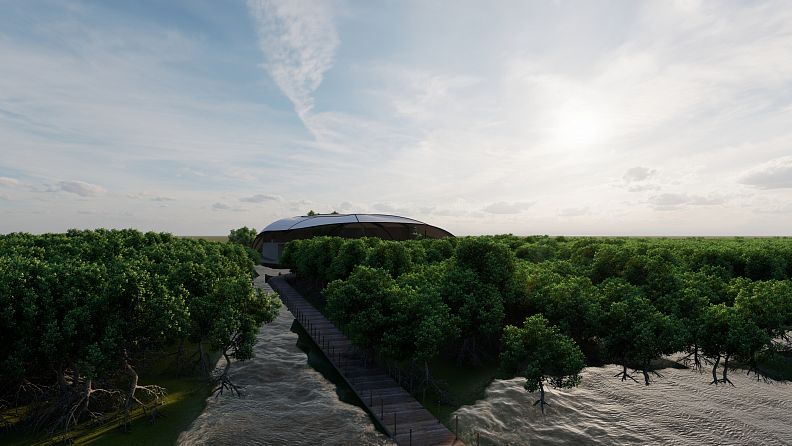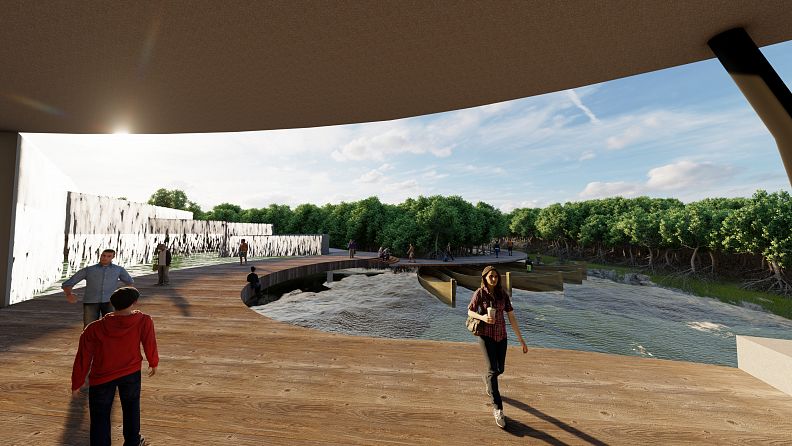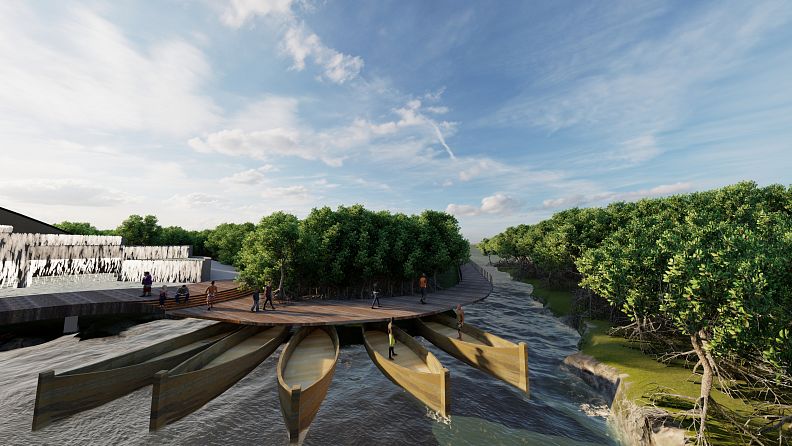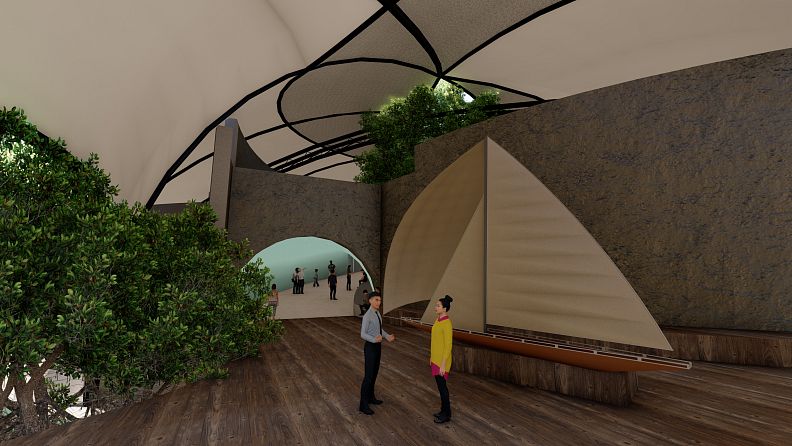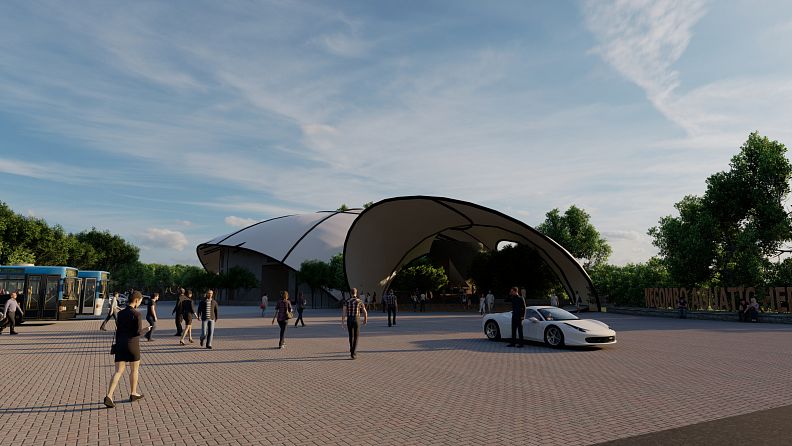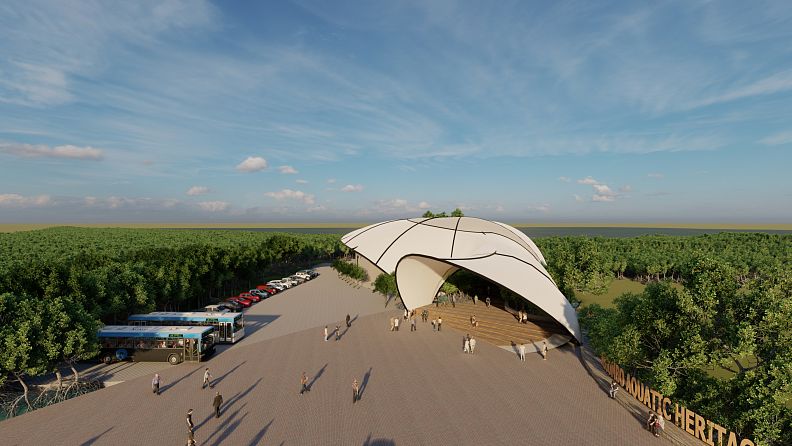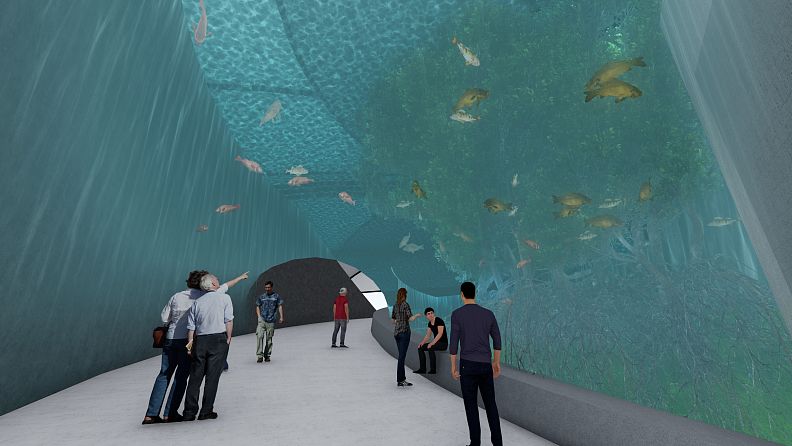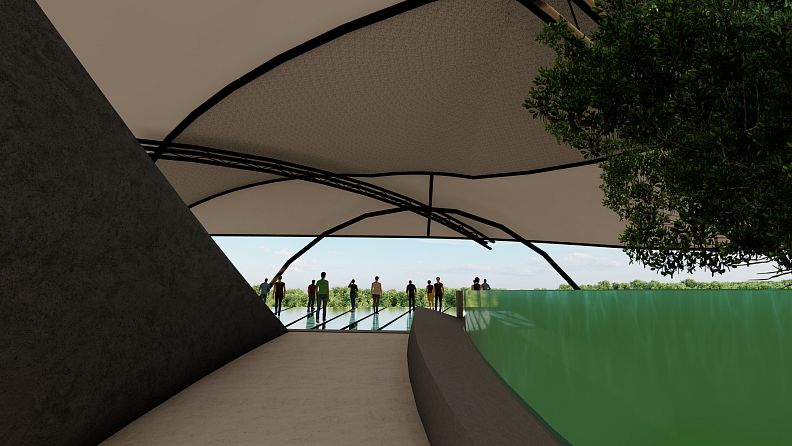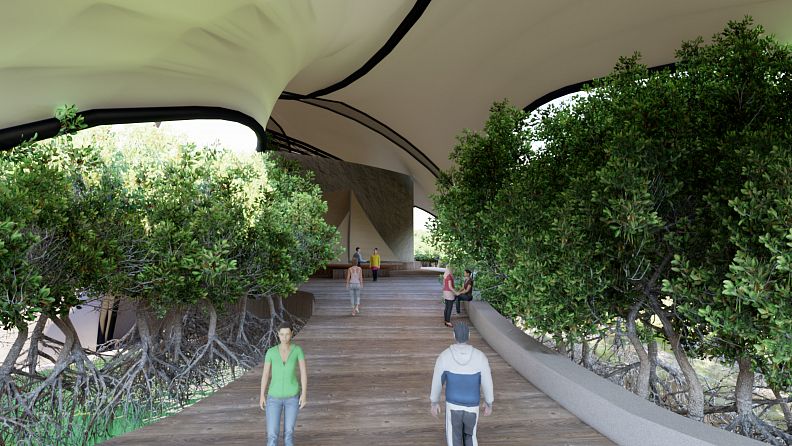Aquatic heritage center - Negombo

Idea projektu
Considering the background analysis, it’s clear that the spirit behind the unique character of Negombo is the aquatic heritage which consists of the beautiful coastal area, the lagoon, wetlands, and the canal system.
When going deep into this spirit of Negombo, it can identify the balance and interconnection between the aquatic heritage and the community is the factor that vitalizes the spirit of Negombo. The liveliness of
Negombo will depend on this strong and balanced interrelationship between the aquatic heritage and the community of Negombo.
As the priority of this design, it should aware people on the value of this aquatic heritage and the aquatic cultures in Negombo. In this design, this message will be given to the visitor about this aquatic
heritage, should be achieved through spaces with different special qualities and also unforgettable memories which will make interest on the visitor to visit this place again.
Also, it should cater to the broader context of the 2030 development master plan which is proposed by the ministry of western region development and megapolis. This design should have activities that can
experience the aquatic culture of Negombo which will also relate with the proposed broader context activities.
Popis projektu
As the priority of this design, it should aware people of the value of this aquatic heritage and the aquatic cultures in Negombo. In this design, this message which will be given to the visitor about this aquatic heritage, should be achieved through spaces with different special qualities and also unforgettable memories which will make interest on the visitor to visit this place again. Also, it should cater to the broader context of the 2030 development master plan which is proposed by the ministry of western region development and megapolis. This design should have activities that can experience the aquatic culture of Negombo which will also relate with the proposed broader context activities.
AMBITION
Awareness and promoting the importance of aquatic heritage in Negombo, while inspiring and engaging the local community by creating a platform for them to uplift their economy and to involve them in suppressing the threats and challenges for the aquatic heritage and aquaculture of Negombo. And creating an entrance for visitors to connect with the functions which have proposed from the 2030 development masterplan
OBJECTIVES
• Awareness and promoting the value and importance of aquatic heritage in Negombo.
• Creating a platform for the local community to uplit their economy.
• Inspiring and engaging the local community and tourists, for the conservation processes.
• Empowering the traditional industries and the local community by utilization and aggregation of available services and resources of local context.
• Promoting sustainable development processes and new technologies.
Technické informace
• Site selection
The proposed site is a very sensitive site with a rich biodiversity of mangrove ecosystems. But because of the human activities of the early use of the site, the roadside area of the site is disturbed a lot and now it can identify the undisturbed vegetation and wildlife, only in the lagoon side area of the site. Because of this fact, with the intention of protecting the remaining biodiversity in the site context, for this construction, it has got the decision to use the almost distracted roadside part of the site.
• Waste management system
In this design, there will be few spaces which can generate more waste, with the usages of the certain place. The main space which can generate waste is the seafood restaurant area on the first floor. There, the organic and other waste will be categorized and will be collected separately into the bins located in each area. From these waste bins, the organic and other waste will be transferred to the garbage collecting main bins through separate garbage tunnels from the first floor. From those main garbage collecting bins, the garbage will be collected by the municipal council's waste collector trucks.
• Elevated floor
In this building, most of the areas are designed with elevated timber decks. Because half of the site is disturbed almost because of the previous human activities, to recover some amount of the damage, there will be mangrove ponds constructed along with the design as landscape. The water bodies underneath the elevated timber floors are also connected with those mangrove ponds and it extends the habitat area.
• Sewer and wastewater treatment system
As the sewer management system of this design, the waste matter from washrooms will be first transferred into the sediment tank. And the wastewater from the kitchens and pantries will be also be transferred to the sediment tank through a grease trap. In the sediment tank, the sludge and scum will be separated. The separated sludge will be exposed to anaerobic digestion and after a certain period, this partition in which the sludge will be stored can be cleaned with the municipal council gullies. The scum diluted with wastewater will be transferred next to a wastewater treatment plant. After the cleaning process of the wastewater, the cleaned water will be released into a leach field. Through this leach field, the cleaned water will be absorbed into the ground.
In this design, the main space is the aquarium with under water tunnel. In this artificial habitat aquarium tank, there is a water level of 3 meters from the ground level. So with that height of water level, the load which will act on the structure because of water will be high. To carry that heavy load, the structure should be strong enough.
For timber piles, Kumbuk timber will be used and as the structural frame for the timber deck, C profile carbon-reinforced polymer bars will be used. With this c profile, carbon fiber reinforced polymer will provide more strength than steel bars and it will be more durable in this kind of wet and salty conditions.
The mainframe of the building will be CFRP bars. to respond and durable well with this environmental condition, CFRP is the best alternative other than using timber. for the roof covering, it has used Teflon roofing to maintain a comfortable condition inside the building. for the walls, it has used EPS cement panels with its best lightweight, fire resistance, and other qualities.







